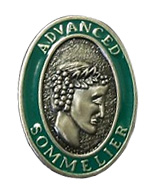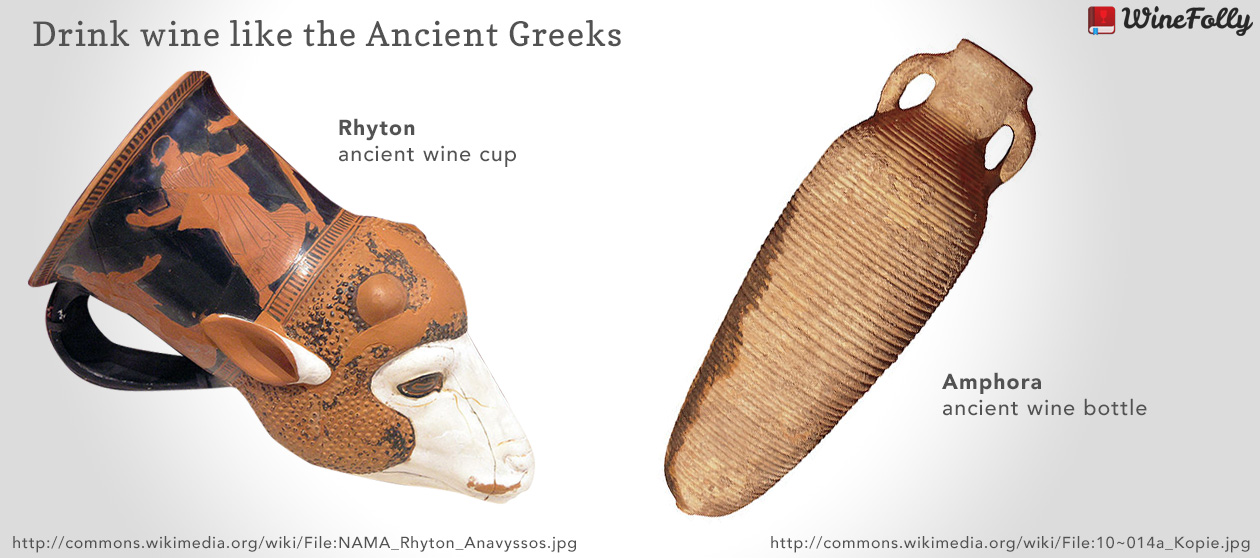 Dionysus, son of Zeus, is known to the world as the bringer of wine. His visage can been seen today on the Sommelier’s pin, a symbol of respect to wine’s contribution throughout history. It seems appropriate too: both of Dionysus’ personalities of extreme pleasure and unthinking rage fit rather perfectly when describing the effects of drinking.
Dionysus, son of Zeus, is known to the world as the bringer of wine. His visage can been seen today on the Sommelier’s pin, a symbol of respect to wine’s contribution throughout history. It seems appropriate too: both of Dionysus’ personalities of extreme pleasure and unthinking rage fit rather perfectly when describing the effects of drinking.
What if the God of Wine, Dionysus, actually existed? What were the wines of Ancient Greece really like? Also, what type of wine glass or goblet would the Greek god of wine use? Let’s take a closer look at ancient Greek wine.
How did Ancient Greek wine taste?
Ancient Greek writers referred to wine as ‘sweet’, ‘dry’ or ‘sour’. There were white wines and black wines (equivalent of red wine today). Sour wines were most likely produced with unripe grapes and had heightened acidity. Sweet and dry wines were exactly like wines today made with either white or red wine grapes.
Since wine preservation methods were poor at best, wines most likely oxidized quickly. Thus, the very best wines ended up being black wines which have the most resistance to oxidation. Because of exposure to oxygen, wines of ancient Greece must have had oddly nutty and sweet aromas similar to brown sugar.
Weird Geeky Wine Discovery In Theophrastus’ writings, he mentions how wine develops a ‘bloom’ in the spring. This ‘bloom’ may have been something like flor on the surface of the wine. Flor is a yeast commonly found today in Sherry production. It “blooms” on the surface of wine in half-filled barrels. Not only does flor add a unique bready taste to wine, it also keeps wines from over-oxidizing. All Fino Sherry are made with flor and are highly prized.
Based on the frequency of mentions in ancient texts written in Linear B, both sweet and dry wines were the most common wines of Ancient Greece. Black wines (both dry and sweet versions) were the most exalted; even Homer’s Odyssey mentions a highly aromatic sweet black wine made in a similar style to Amarone della Valpolicella. Homer suggests that the wines were from north of Greece and were concentrated by laying them on straw mats. The wine would have had a heightened alcohol level and a sweet tasting finish.
Ancient Greek Grape Variety: Limnio
In Lemnos, you can still find wines made with a black grape called Limnio. It is perhaps one of the oldest cultivated grapes in Greece and mentioned by Aristotle as having the herbaceous flavors of oregano. Today you can find it blended with Cabernet Sauvignon and Cabernet Franc, which add tannin structure. There are only 170 acres of this grape variety in the world.
Black wines of ancient Greece
More than likely, the Greek god of wine had a hankering for famed black wines. Greek poets were the wine writers of the day who touted specific regions (and not producers) including the islands of Limnos, Chios, Kos, Lesbos and Crete. Black wines were unoaked and sometimes flavored with herbs or tree sap.
Wine and Health Since wine was considered healthful it was used as a base for apothecary tinctures, using herbs, saps, olive oil and bitter roots to cure everything from menstrual cramps to depression. Both Theophrastus and Hippocrates mentioned the importance of wine for health in their writings.

The Real Godfather of Wine
There is one man that lived in ancient Greece who could very well have been the true grandfather of wine. His name was Theophrastus (“Theo-FRASS-tus”) who lived around c. 371 – c. 287 BC. Theophrastus was a scholar in the Artistotle school and his book Enquiry into Plants mentions how odors of decaying animals and plants are evil and putrid, except for the aromas of wine because fermentation is necessary to achieve wine’s health benefits.
Theophrastus offered many observations on wine growing techniques including matching soil types with different varieties, vine training, and even reducing yields to make higher quality grapes.
How did people consume wine in Ancient Greece?
The Greek god of wine probably received wine by amphora an earthenware jug that held the equivalent of about 4 bottles of wine (the same size as boxed wine). To drink wine, more than likely, Dionysus used a decorated rhyton, a horn-shaped cup made of horn, bronze, gold or clay. The way these rhytons are designed, you can’t really set it down. More than likely, people in Classical Greece chugged a whole rhyton or shared it ceremoniously.

